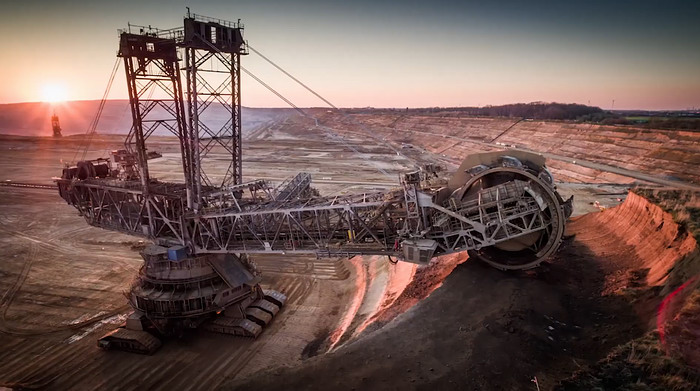How Dust Monitoring Systems Elevate Post-Flight Cleanliness

Maintaining the cleanliness of airplanes is crucial for passenger safety, comfort, and overall airline reputation. While traditional cleaning methods focus on visible dirt and debris, they may miss finer particles that pose health risks or compromise air quality. This is where dust monitoring systems come into play. They help identify areas with higher dust levels, allowing for targeted cleaning efforts and ensuring that the cabin air remains safe and comfortable for all passengers.
The Importance of Clean Air in Airplanes
The air quality inside airplanes is a significant concern for airlines and passengers alike. Due to the enclosed environment and the high number of passengers in a confined space, dust and other airborne particles can accumulate quickly. Factors like frequent passenger movement, in-flight meals, and HVAC systems can stir up dust, affecting the cabin’s overall cleanliness. For airlines, maintaining high air quality is not only a regulatory requirement but also an essential aspect of customer satisfaction and health safety.
Clean air is also vital for reducing allergic reactions and respiratory issues, which could be triggered by dust and fine particles. Especially for passengers with asthma or other respiratory conditions, the presence of dust can be uncomfortable or even hazardous. By implementing dust monitoring systems, airlines can ensure they are not just cleaning to a visible standard but also addressing the microscopic particles that impact air quality.
How Dust Monitoring Systems Work
Dust monitoring systems use advanced sensors to detect the concentration of airborne particles in various areas of an airplane. These systems can measure particles of different sizes, including PM10, PM2.5, and even finer particulates. This precision allows airlines to understand which areas of the aircraft are more prone to dust accumulation and require more thorough cleaning.
These systems typically work in real time, providing data that can be used to adjust ventilation settings or focus cleaning efforts where they are most needed. This real-time capability means that airlines can respond promptly to changes in dust levels, maintaining a consistently clean environment for each flight.
Targeted Cleaning: Maximizing Efficiency
One of the primary benefits of using dust monitoring systems in aircraft is their ability to inform targeted cleaning. Instead of applying a uniform cleaning process across all areas, airlines can focus their efforts on spots where dust is more likely to accumulate, such as:
- Seats and armrests:
- Overhead compartments:
- HVAC systems:
High-touch areas tend to harbor more dust and dirt particles, especially after long-haul flights.
Dust can gather in these spaces due to luggage handling and air circulation patterns.
Dust particles can settle within air vents and recirculation units, potentially affecting the overall air quality in the cabin.
With targeted data from dust monitoring systems, cleaning teams can prioritize these high-risk areas, ensuring thorough removal of dust particles. This approach not only improves cleanliness but also reduces the time and resources spent on cleaning, making the process more efficient and cost-effective.
Enhancing Passenger Experience and Confidence
The travel industry is highly competitive, and passenger experience is a key differentiator for airlines. Cleanliness, including air quality, plays a significant role in shaping passenger perceptions. Dust monitoring systems provide an additional layer of assurance, allowing airlines to demonstrate their commitment to maintaining a clean and safe environment.
In the post-pandemic era, passengers are more conscious than ever about hygiene standards in enclosed spaces like airplane cabins. Visible cleaning efforts, combined with data-driven cleanliness strategies, can build passenger confidence. When travelers see that an airline is taking extra measures to ensure clean air, they are more likely to trust that their health is being prioritized, leading to increased customer loyalty and positive reviews.
Cost-Effectiveness Through Preventative Maintenance
Dust monitoring systems not only help with daily cleaning but also support long-term maintenance. Dust and other airborne particles can accumulate in the ventilation and filtration systems of airplanes, reducing their efficiency over time. If left unchecked, this can lead to higher maintenance costs and potential malfunctions in air circulation systems.
By using dust monitoring systems, airlines can keep track of dust levels in real time and schedule maintenance before issues arise. This proactive approach helps to avoid costly repairs and ensures that the HVAC systems continue to operate efficiently, contributing to better overall air quality and a comfortable cabin environment. It also extends the lifespan of critical systems, saving costs on replacements and improving the aircraft’s operational reliability.
Compliance with Air Quality Standards
Airlines are subject to strict regulations regarding air quality and passenger safety. Many of these regulations include requirements for managing particulate levels in the cabin environment. Dust monitoring systems provide the data needed to demonstrate compliance with these standards, offering peace of mind to both airlines and regulatory bodies.
In the event of inspections or audits, airlines can present data from their dust monitoring systems to show that they are meeting or exceeding cleanliness standards. This data-driven approach not only ensures compliance but also helps airlines identify opportunities for improvement, such as adjusting cleaning protocols or upgrading air filtration systems.
Integration with Advanced Cleaning Technologies
Dust monitoring systems can also be integrated with other advanced cleaning technologies, such as air purifiers and UV disinfection systems. By providing precise data on dust levels, these systems allow airlines to optimize the use of air purifiers, ensuring they are deployed in the most effective areas. For example, if the dust sensors indicate a higher concentration of particles in a particular zone of the aircraft, air purifiers can be activated in that area to reduce airborne contaminants.
This integration creates a more comprehensive approach to maintaining cleanliness, combining traditional cleaning methods with high-tech solutions. The result is a cabin environment that feels fresher and cleaner, providing a better travel experience for passengers.
Future Trends: Data-Driven Hygiene
The adoption of dust monitoring systems is part of a broader trend toward data-driven hygiene in the aviation industry. With advancements in sensor technology and data analytics, airlines are now able to monitor and maintain cleanliness at a level that was previously unattainable.
Future developments may include predictive analytics, where dust monitoring data is used to forecast areas that will need more attention in upcoming cleaning cycles. This would enable airlines to anticipate needs based on flight duration, passenger load, and other variables, making the cleaning process even more efficient.
Conclusion
Dust monitoring systems play a crucial role in maintaining a high standard of cleanliness in airplane cabins. By providing real-time data on particulate levels, these systems allow airlines to target their cleaning efforts, enhance passenger comfort, ensure regulatory compliance, and maintain the efficiency of critical systems.
As passengers continue to prioritize hygiene and air quality, investing in dust monitoring systems is not just a matter of compliance—it is an essential part of delivering a superior travel experience. Through a data-driven approach to cleanliness, airlines can ensure that every flight is not only clean to the eye but also to the air passengers breathe.







